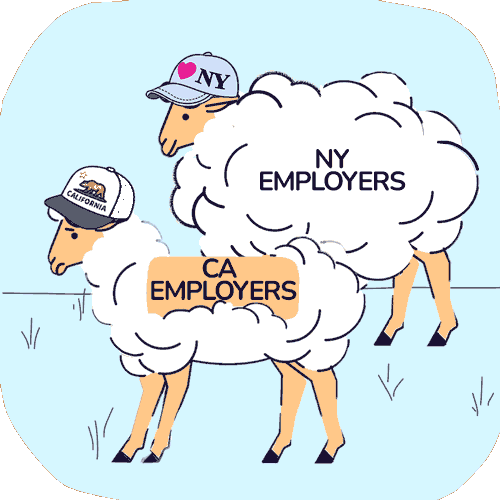New York: WCB Update Affirms Electronic EOR Requirement

New York State’s Workers’ Compensation Board (WCB) issued an update to the mandatory Claim Adjustment Reason Codes (CARCs) and Remittance Advice Remark Codes (RARCs) required when payers object to a provider’s billed charges for treating an injured worker.
The update provides specific instructions regarding how payers must file payment objections for reasons of:
- Apportionment
- Missing taxpayer identification information
Of equal importance, the WCB’s announcement affirms a fundamental requirement of electronic billing and payment: payers must respond to electronic bills with electronic Explanations of Review (e-EORs).
CARCs/RARCs for Payment Objections
In New York, payers may not deny or adjust payment to a provider for the treatment of an injured worker without the EOR citing specific reasoning.
The EOR (sometimes referred to as an “EOB,” or Explanations of Benefits) sent in response to the provider’s bill must justify all adjustments using standardized reason codes: the nationally recognized CARCs and RARCs (RARCs are supplemental codes used only in conjunction with CARCs; CARCs may be used alone).
The Washington Publishing Company maintains the standards for both CARCs and RARCs.
The WCB’s August 2022 announcement specifies the CARCs and RARCs payers must use when refusing to pay all or some of a provider’s bill, as follows:
Objection |
Reason |
CARC |
RARC |
Payment Adjusted Due to Apportionment |
Apportionment of the liability among other injuries |
P32 |
n/a |
Request for Taxpayer Identification Number and Certification (W-9) not on file |
An attachment or other documentation is required to adjudicate this claim/service; payment is withheld pending receipt of the provider’s federal tax identification number on a form W-9 |
252 |
N836 |
The WCB also notes that payers should not treat a missing W-9 as a legal payment objection, stating:
“Although the Board does not consider lack of a W-9 to be a valid legal objection, it is understood that lack of the W-9 could delay payment. These payment issues should be resolved directly between the health care provider and the payer.”
e-EORs Mandatory in Response to e-Bills
Crucially, the WCB announcement made it even more clear that New York payers must respond to e-bills with e-EORs. The announcement states:
“...one of the requirements for payers is that they must provide the Explanation of Benefits (EOBs) electronically to health care providers identifying the same Claim Adjustment Reason Codes (CARCs) as specified on Notice of Objection to a Payment of a Bill for Treatment Provided (Form C-8.1B) or Notice to Health Care Provider and Claimant of an Insurer's Refusal to Pay All (or a portion) of a Medical Bill Due to Valuation Objection(s) (Form C-8.4) when the associated medical bill was received electronically.” [emphasis added]
Despite apparent confusion on the part of some claims administrators and clearinghouses, workers’ comp e-billing cannot work in New York State without compliant e-EORs, which automatically post payment details to the provider’s e-billing software.
To better facilitate the treatment of injured workers, both sides of the equation must uphold their responsibilities re: electronic billing and payment.
Have questions about e-billing for New York workers’ comp? Use the pink chat icon in the bottom right of this screen, or email us at info@daisybill.com. We’re here to help all providers, whether you’re a client or not.
Protect your practice revenue. Harness the power of daisyBill software, data, and expertise for faster, better workers’ comp billing.
SCHEDULE A DEMO
DaisyBill provides content as an insightful service to its readers and clients. It does not offer legal advice and cannot guarantee the accuracy or suitability of its content for a particular purpose.





.png)